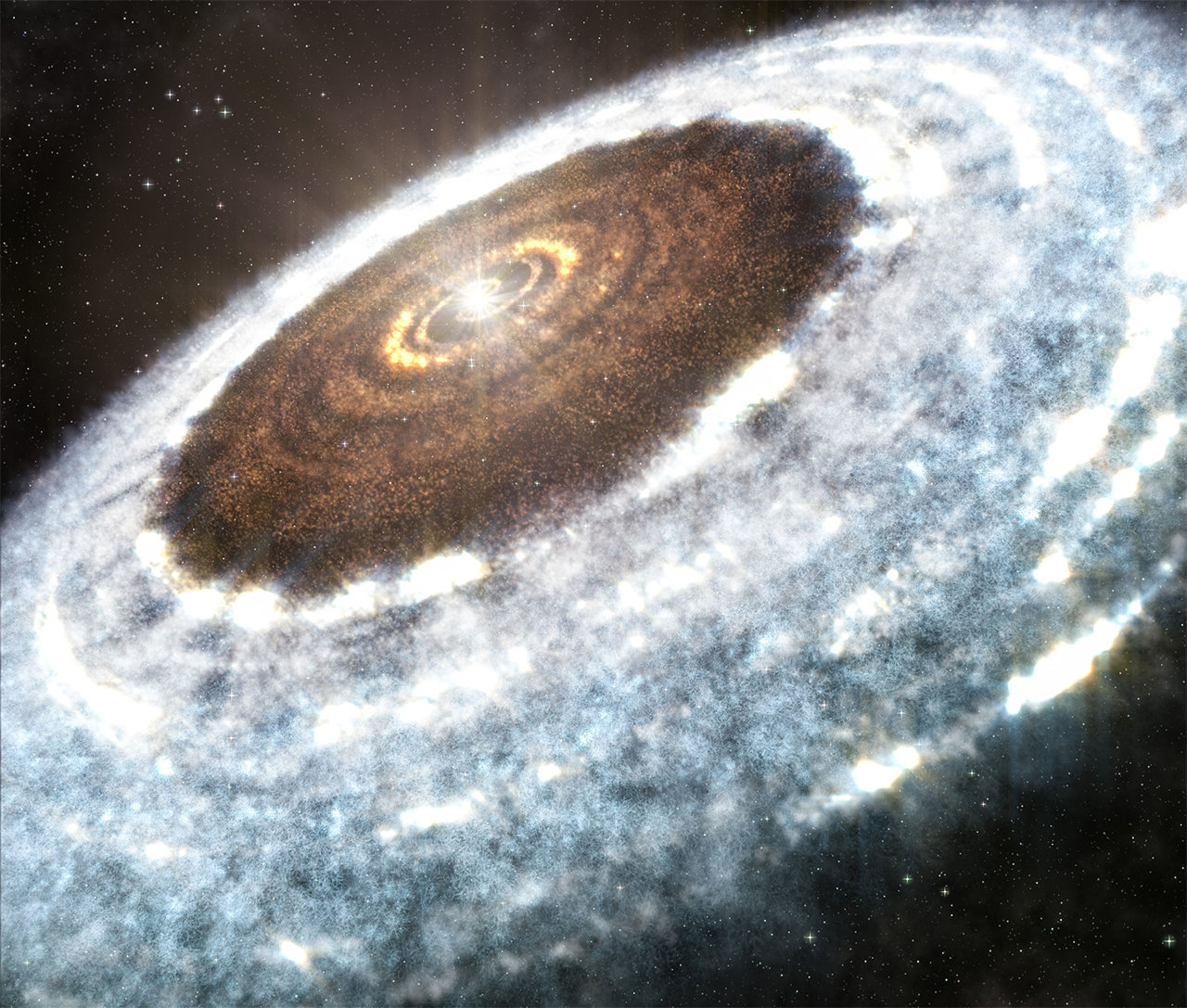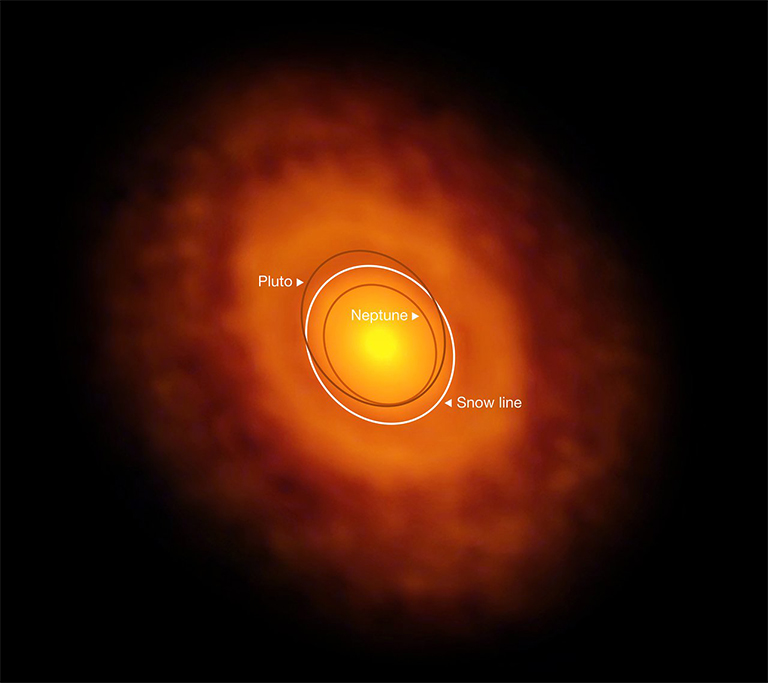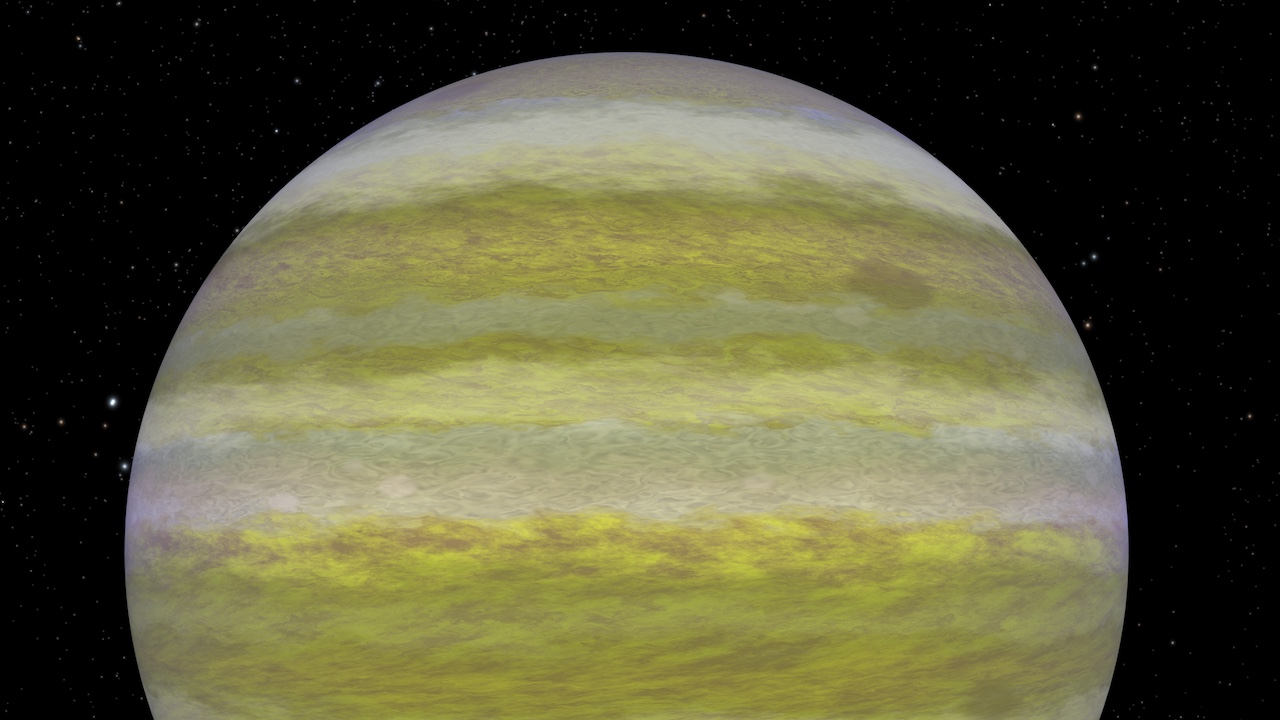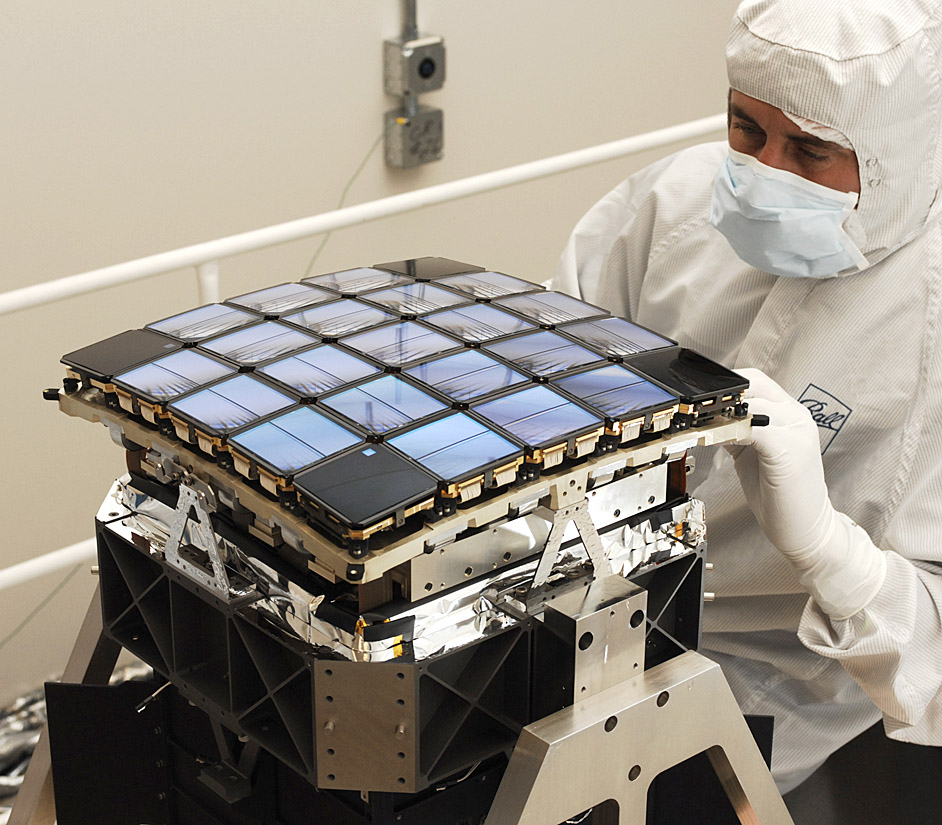5 min read

◆ The Atacama Large Millimeter/submillimeter Array (ALMA) has taken the first ever image of a water snow line within a planet-forming disk.
◆ This line marks where the temperature in the disk surrounding a young star drops sufficiently low for snow to form, which plays a key role in how planets form.
◆ While planet formation is still a mystery, it is believed that within the water snow line rocky planets like Earth form. Outside it, massive gaseous planets like Jupiter can arise.
Young stars are often surrounded by dense, rotating disks of gas and dust, known as protoplanetary disks, from which planets are born. The heat from a typical young solar-type star means that the water within a protoplanetary disk is gaseous up to distances of around 3 AU from the star [1] — less than 3 times the average distance between the Earth and the Sun — or around 450 million kilometers (roughly 280 million miles)[2]. Further out, due to the extremely low pressure, the water molecules transition directly from a gaseous state to form a patina of ice on dust grains and other particles. The region in the protoplanetary disk where water transitions between the gas and solid phases is known as the water snow line [3].
But the star V883 Orionis is unusual. A dramatic increase in its brightness has pushed the water snow line out to a distance of around 40 AU (about 6 billion kilometers or roughly the size of the orbit of the dwarf planet Pluto in our solar system). This huge increase, combined with the resolution of ALMA at long baselines [4], has allowed a team led by Lucas Cieza (Millenium ALMA Disk Nucleus and Universidad Diego Portales, Santiago, Chile) to make the first ever resolved observations of a water snow line in a protoplanetary disk.

The sudden brightening that V883 Orionis experienced is an example of what occurs when large amounts of material from the disk surrounding a young star fall onto its surface. V883 Orionis is only 30 percent more massive than the sun, but thanks to the outburst it is experiencing, it is currently a staggering 400 times more luminous — and much hotter [5].
Lead author Lucas Cieza explains, “The ALMA observations came as a surprise to us. Our observations were designed to look for disk fragmentation leading to planet formation. We saw none of that; instead, we found what looks like a ring at 40 AU. This illustrates well the transformational power of ALMA, which delivers exciting results even if they are not the ones we were looking for.”
The bizarre idea of snow orbiting in space is fundamental to planet formation. The presence of water ice regulates the efficiency of the coagulation of dust grains — the first step in planet formation. Within the snow line, where water is vapourised, smaller, rocky planets like our own are believed to form. Outside the water snow line, the presence of water ice allows the rapid formation of cosmic snowballs, which eventually go on to form massive gaseous planets such as Jupiter.
The discovery that these outbursts may blast the water snow line to about 10 times its typical radius is very significant for the development of good planetary formation models. Such outbursts are believed to be a stage in the evolution of most planetary systems, so this may be the first observation of a common occurrence. In that case, this observation from ALMA could contribute significantly to a better understanding of how planets throughout the Universe formed and evolved.
To read the research paper entitled “Imaging the water snow-line during a protostellar outburst”, by L. Cieza et al., to appear in Nature on July 14, 2016, visit:
- 1 AU, or one astronomical unit, is the mean distance between the Earth and the sun, around 149.6 million kilometers.This unit is typically used to describe distances measured within the solar system and planetary systems around other stars.
- This line was between the orbits of Mars and Jupiter during the formation of the solar system, hence the rocky planets Mercury, Venus, Earth and Mars formed within the line, and the gaseous planets Jupiter, Saturn, Uranus and Neptune formed outside.
- The snow lines for other molecules, such as carbon monoxide and methane, have been observed previously with ALMA, at distances of greater than 30 AU from the protostar within other protoplanetary disks. Water freezes at a relatively high temperature and this means that the water snow line is usually much too close to the protostar to observe directly.
- Resolution is the ability to discern that objects are separate. To the human eye, several bright torches at a distance would seem like a single glowing spot, and only at closer quarters would each torch be distinguishable. The same principle applies to telescopes, and these new observations have exploited the exquisite resolution of ALMA in its long baseline modes. The resolution of ALMA at the distance of V883 Orionis is about 12 AU — enough to resolve the water snow line at 40 AU in this outbursting system, but not for a typical young star.
- Stars like V883 Orionis are classed as FU Orionis stars, after the original star that was found to have this behavior. The outbursts may last or hundreds of years.







